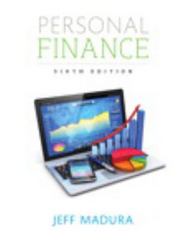Answered step by step
Verified Expert Solution
Question
1 Approved Answer
In contingent valuation, which is a method to find out the willingness to pay for public goods in cost benefit analysis, individuals are asked if

In contingent valuation, which is a method to find out the willingness to pay for public goods in cost benefit analysis, individuals are asked if they are willing to pay a certain amount for a certain level of the public good. Since the answer to this question is only a yes or a no, we can only identify if the individuals willingness to pay is more or less than the proposed amount (known as the "bid"). Therefore, this discrete choice payment format requires a lot of interviews with a lot of individuals in order to precisely estimate the average willingness to pay for public goods. An obvious way to increase the efficiency of this process is to ask the same individuals two questions: if respondents agreed to the first amount, we ask them if they would agree to twice that initial bid if they did not agree to pay the first bid, we ask them if they would agree to pay half that amount. This leads to the double bound" discrete choice payment format, which is more efficient but it's biased downwards: it understates the public's willingness to pay for the public good. Comment on how in this case you would recommend trading off precision for unbiasedness. Would you recommend the use of a single-bound or a double-bound question format? In contingent valuation, which is a method to find out the willingness to pay for public goods in cost benefit analysis, individuals are asked if they are willing to pay a certain amount for a certain level of the public good. Since the answer to this question is only a yes or a no, we can only identify if the individuals willingness to pay is more or less than the proposed amount (known as the "bid"). Therefore, this discrete choice payment format requires a lot of interviews with a lot of individuals in order to precisely estimate the average willingness to pay for public goods. An obvious way to increase the efficiency of this process is to ask the same individuals two questions: if respondents agreed to the first amount, we ask them if they would agree to twice that initial bid if they did not agree to pay the first bid, we ask them if they would agree to pay half that amount. This leads to the double bound" discrete choice payment format, which is more efficient but it's biased downwards: it understates the public's willingness to pay for the public good. Comment on how in this case you would recommend trading off precision for unbiasedness. Would you recommend the use of a single-bound or a double-bound question format
Step by Step Solution
There are 3 Steps involved in it
Step: 1

Get Instant Access to Expert-Tailored Solutions
See step-by-step solutions with expert insights and AI powered tools for academic success
Step: 2

Step: 3

Ace Your Homework with AI
Get the answers you need in no time with our AI-driven, step-by-step assistance
Get Started


